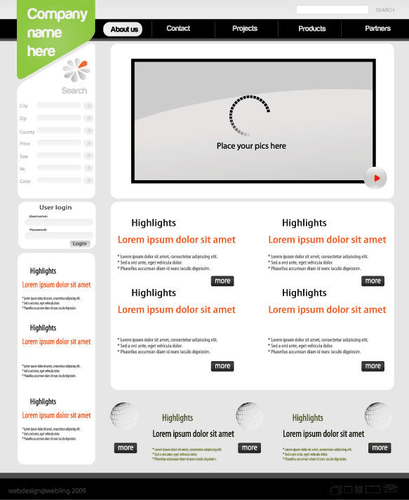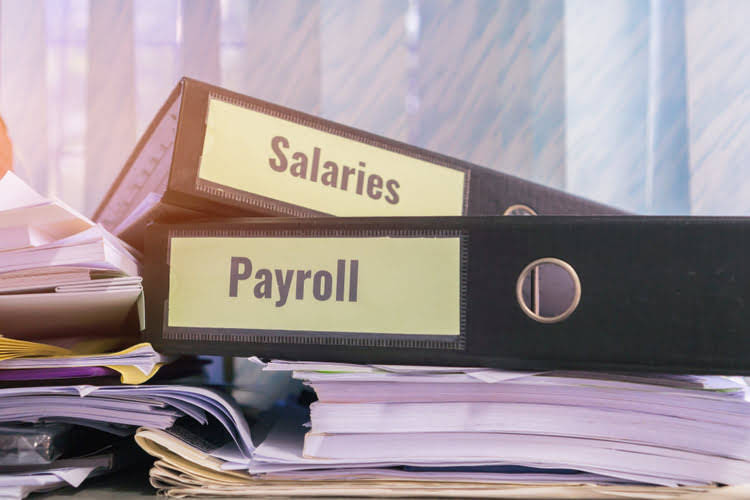A Simple Guide to the R&D Tax Credit Bench Accounting

Building a prototype SaaS platform with a new architecture (cloud-based, scalable infrastructure) to handle unprecedented loads. Experimenting with different tech stacks and configurations to meet scalability goals is qualified research. Explore how to REDUCE, RESOLVE, or even ELIMINATE your back taxes through the IRS Fresh Start Program. By avoiding these red flags, you reduce your audit risk and increase your chances of getting the credit approved. Although there is a unified Congress going into 2025 (with Republicans having a slim majority in the House), there previously was a bipartisan desire to reverse Section 174. However, because the cost to the government of implementing a more favorable R&D expensing rule is uncertain, it is questionable whether it would pass.

Accounting and Administrative Relief
- In practice, this means if your business invests heavily in R&D early on without immediate profits, you can still bank credits to offset future tax liabilities.
- These costs must continue to be capitalized and amortized over 15 years, with no option for immediate deduction.
- Eide Bailly is a CPA firm bringing practical expertise in tax, audit, and advisory to help you perform, protect, and prosper with confidence.
- Additionally, having substantial rights in the developed product and restricting qualified activities to within the United States are crucial.
- For example, if a business claims a credit for wages, it must reduce its wage deduction by the corresponding amount.
- This allows companies to receive a tax benefit from their research activities whether or not they’re profitable.
The OBBBA doesn’t just fix a broken policy—it signals that America values innovation and wants to support the businesses driving our economy forward. If you’re a small business owner who’s been drowning in the R&D amortization https://www.bookstime.com/ mess since 2022, I’ve got some fantastic news for you. President Trump just signed the One Big Beautiful Bill Act (OBBBA) yesterday, and it’s about to change everything for businesses that invest in research and development. Bringing back the immediate deduction for research and development expenses under Code Sec. 174 has emerged as a priority for lawmakers on both sides of the aisle. If your business invests in R&D activities, these new rules could significantly impact your tax liability and generate refunds for prior years.
OBBBA Penalty Relief: IRS Notice 2025-62 Provides Transition Year for “No Tax on Tips and Overtime” Reporting

The scheme injects cash back into the company, which can be used for various expenses such as salaries, rent, and equipment, thereby addressing cash flow challenges. Dania Accounting is here to provide tailored guidance, help optimise tax planning strategies, and ensure compliance with regulatory requirements. This documentation will help support claims during tax audits and ensure compliance with what is r&d tax credit tax regulations. Proper documentation of R&D activities is essential to substantiate claims for tax incentives. For tax purposes, Danish companies must establish clear and measurable objectives for their R&D projects, outlining the specific outcomes or innovations they aim to achieve.
Research Credit Coordination: Major Changes You Need to Know #research-credit-changes
Absent updated legislation, new requirements will go in to effect this upcoming 2022 tax filing season. The following update was co-authored by ADP subject matter experts, Elizabeth Bowman, Tax Manager, Compliance Solutions/Tax Credits and Brandi Price, Director, Compliance Solutions/Tax Credits. Accounting CPA is a top-notch CPA firm in Colorado Springs that provides excellent accounting and Tax services for small businesses. Our team of skilled and experienced small business CPAs is dedicated to helping our clients achieve their financial goals and maximize their profits.
![]()
That means manufacturers, fabricators and certain processors may be able to immediately deduct the full cost of new facilities and equipment used in qualifying production activities. Companies with long lead times should start planning construction projects now to ensure eligibility within those dates. A federal tax lien is the government’s legal claim against your property when you don’t pay the taxes you owe. Federal tax liens apply to all assets, including real estate, personal property, and financial accounts. They ensure that the government gets paid before other creditors if you sell your property.It might sound scary, but there are ways to address it. First, ensure you qualify and claim at the federal level, and concurrently explore credits in every state where you have significant research operations.
This includes startups and established businesses alike, provided your research involves scientific or technological uncertainty and a process of experimentation. Both small and midsize businesses can take advantage, especially those investing in innovation domestically and documenting eligible expenses under Section 41 of the Internal Revenue Code. Tax incentives like the federal Research and Development (R&D) tax credit can significantly reduce your business’s tax liability by rewarding innovation activities. If you are investing in developing or improving products, processes, software, or technologies, you may qualify for this credit. Understanding the eligibility criteria and how to claim it can help you maximize your benefits and support your company’s growth through innovation.
- It’s important to note, however, that the requirement to capitalize foreign R&D costs remains unchanged; they must still be capitalized and amortized over 15 years.
- Back in 2017, when the Tax Cuts and Jobs Act (TCJA) came out, it included a provision that required taxpayers to capitalize and amortize R&D expenses starting after December 31, 2021, rather than currently deducting them.
- The now-stalled bipartisan tax bill (H.R. 7024) would have allowed businesses, both large and small, to immediately deduct the cost of their US-based research and experimental costs — but just through 2025.
- The federal R&D tax credit isn’t refundable, but if your available credit is bigger than your tax bill, you can carry your credit forward for up to 20 years.
- This flexibility makes the credit valuable over the long term, even if it can’t be fully used immediately.
- This approach is promising for expanding the program’s benefits to more small businesses.
- An eligible business can apply up to $250,000 of its R&D credit to its payroll tax liability each year.
The R&D tax credit allows eligible businesses to offset the credit against their payroll taxes. This means that in addition to reducing their income tax liability, companies can utilize the credit to offset a portion of their payroll tax obligations. The R&D tax credit can provide substantial relief by reducing the burden of employment taxes, freeing up capital that can be reinvested into further innovation and growth. What’s not to love about a program that enables companies to reduce their federal tax bill, dollar for dollar, by 6% to 10% on qualified R&D spending, with the potential for even greater savings through state R&D tax credits?
- This synergy between the R&D tax credit and payroll taxes creates a win-win situation for businesses, as they can simultaneously invest in their workforce and drive technological advancements.
- The R&D tax credit allows companies that engage in research and development activities to offset their business’s tax liability.
- But how you handle prior-year costs depends on whether you qualify as a small business, and the clock is ticking for those filing 2024 returns.
- Alternatively, they can elect to claim a reduced IRC Section 41 research credit instead of reducing the deduction.
- However, new businesses that have a lot of research costs and little or no income tax liability have an alternative that can help them reduce their tax burden immediately.
- We provide modern accounting, tax, and advisory services for businesses and individuals across the U.S.
Research involves conducting original activities aimed at achieving new scientific or technical understanding. Understanding the expected timelines for payment is essential for effective financial planning and management. If you forgot to apply for the Tax Credit Scheme, you can apply to change your Corporate Income Tax Return within the statute of limitations.
- This extended carryforward period provides substantial flexibility in managing tax strategy alongside fluctuating R&D spending or income levels.
- Calculating both the regular and simplified credits lets you claim the higher amount.
- This would apply to costs incurred in tax years beginning after December 31, 2024.
- This can include fundamental research activities that contribute to the advancement of knowledge in a particular field, such as exploring theoretical concepts, conducting experiments, or developing hypotheses.
- The new law offers flexibility for businesses that have been sitting on unamortized R&D deductions from 2022 through 2024.
- While expenses related to R&D activities are undergoing a shift in deductibility this year, the R&D tax credit will remain the same other than the expansion of the Inflation Reduction Act of 2022 (IRA).
- Companies must now spread the deduction over multiple years, which could affect their immediate tax liabilities and cash flow.
Support & training
Qualified Research Expenses (QREs) are the specific costs that a company can claim under the U.S. These are defined by Internal Revenue Code (IRC) Section 41 and are a subset of research and experimental expenditures outlined in IRC Section 174. If you’re unsure about the process, consider hiring a tax consultant who specializes in R&D QuickBooks Accountant tax credits.

However, under current law, the tax treatment of R&D is scheduled to change at the end of 2021, requiring R&D expenses to be amortized over five years. Eric is a Principal with SVA Certified Public Accountants with vast experience and technical knowledge in tax compliance, research, and planning. He assists corporations and partnerships with tax savings through transaction structuring, tax credits and accounting methodology. He works closely with businesses to plan their cash flow for tax liabilities through quarterly estimate planning. While expenses related to R&D activities are undergoing a shift in deductibility this year, the R&D tax credit will remain the same other than the expansion of the Inflation Reduction Act of 2022 (IRA).

















